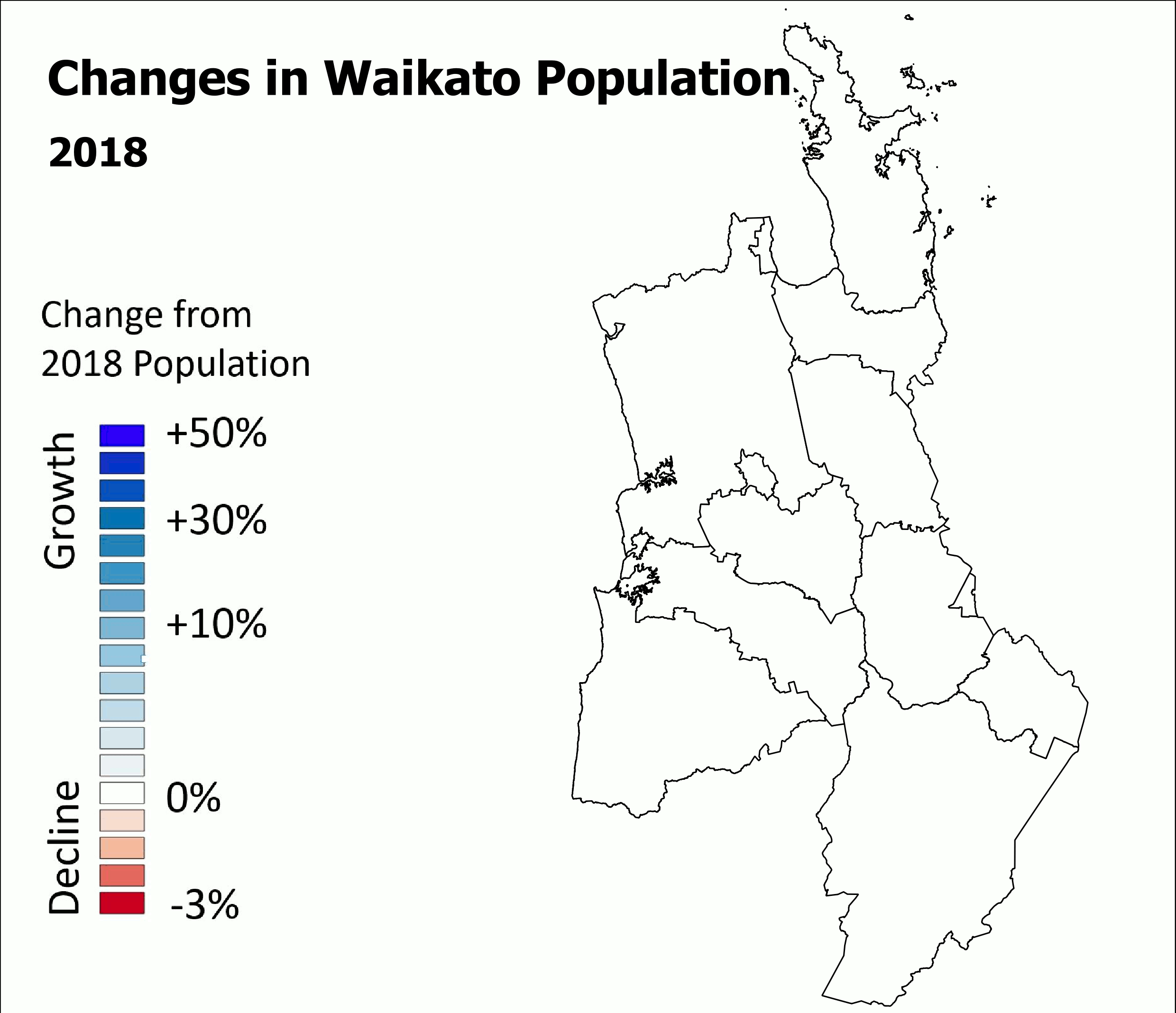

There is a need for consistent and defendable future projections of demographic and economic indicators by the local authories in the Waikato to assist their long term planning.
The purpose of the projection work is to provide consistent outputs across the region for the key indicators (Land use, Population, Households, Workforce, Employment, Value Added) at a regional, city/district and down to a statistical area level 2 (SA2) scale.
The 2018-based Waikato land use, population, household, employment and economic projections will be updated following the 2023 Census, at regional, district and local areas (SA2) level. Results expected in late 2025.
The Waikato Projections for 2018-2068 are based on the 2018 census data and were completed at the end of March 2021. The Waikato projections project initially develops data at a TA level for several parameters (i.e. population - Figure 1). Further modelling work then provides outputs for the key parameters down to a Statistical Areas 2 unit level (SA2).

Figure 1: Animation of TA level population projection changes over time
Initial work on this projection approach was started in 2015 and create the first set of consistent projections for the Waikato based on the 2013 census data.
The results presented here are from the latest round of modelling. The modelling to create SA2 level projections followed the same methodology used in the 2013 projections and is outlined below. The final outputs for this work provide data at a SA2 level for the timeframes 2018, 2025, 2035, 2045, 2055, and 2065. The folllowing parameter outputs are modelled by SA2:
These parameters are generated using three different modelling processes (Figure 2). The WISE model is used to generate projections of future land use by SA2. This land use information is then used in two other modelling processes (Demographics by University of Waikato, Economics by Market Economics Ltd) to provide the other parameters at a SA2 level.

Figure 2: Process for development of SA2 level projections - links between three modelling work streams
The strength of this approach is that the key known drivers of future land use change (projected Teritorial Authority (TA) population growth, district plan zoning, planned infrastructure, geophysical suitability etc) are all used in projecting future land use change in WISE. This land use information can then be used to directly influence the allocation of population and associated economic activity at a SA2 level through additioanl modelling. See reports below for further information on modelling processes.